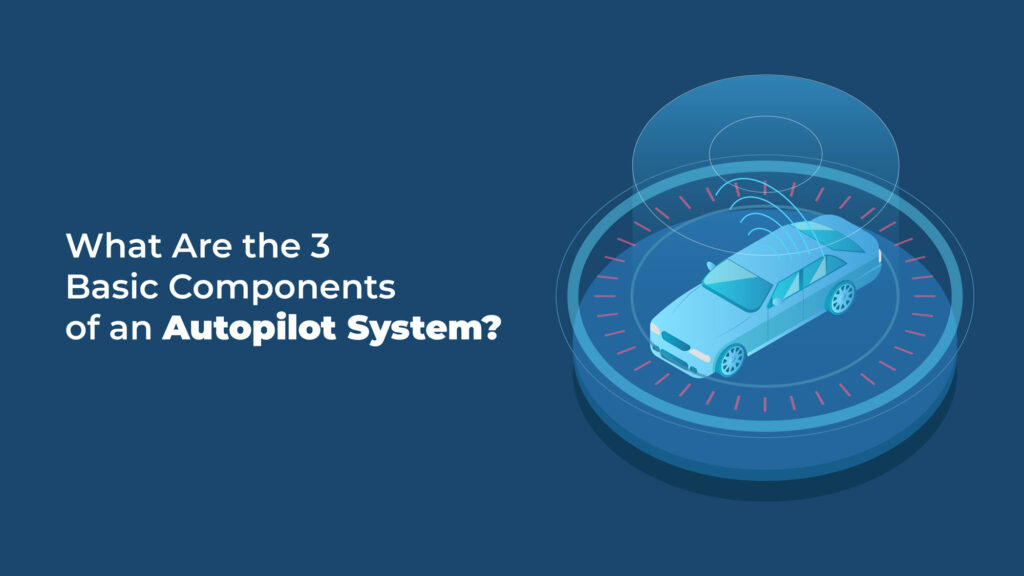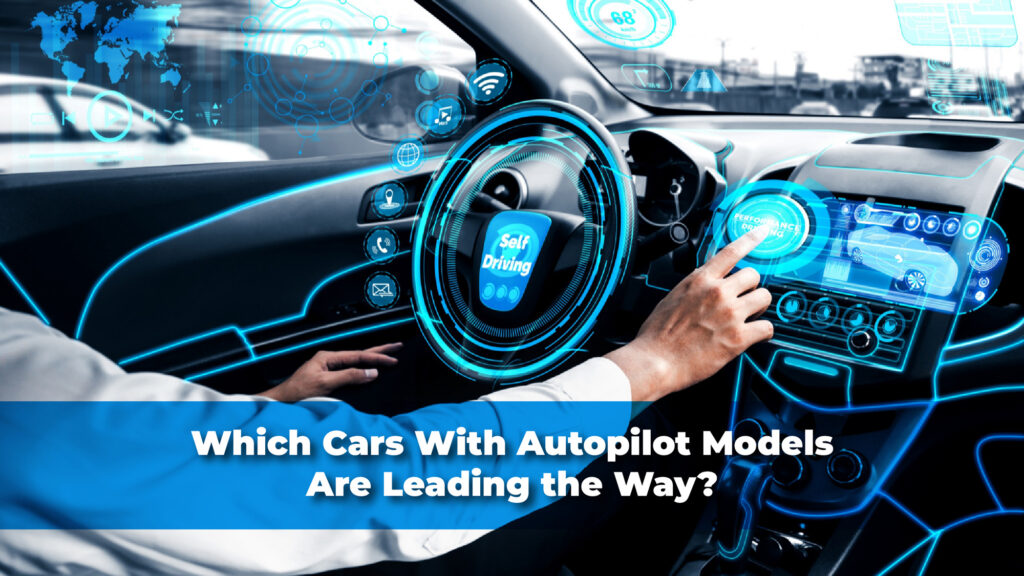The autopilot is a feature that has been present in airplanes for many years. In the context of automobiles, the term “autopilot” was briefly believed to have been in use as a synonym for conventional cruise control in the 1950s. These types of questions today obviously pertain to Tesla’s Autopilot, a marketed feature that combines adaptive cruise control and lane-centering driving.
Cars with autopilot, commonly referred to as self-driving technology, are showing up increasingly frequently in modern vehicles. It is a function that, without the driver’s input, uses a mix of cameras, sensors, and software to handle the vehicle’s acceleration, steering, and braking. Sounds crazy, right?
Well, let’s dive into the world of cars with autopilot and see what all the fuss is about.
What Are the 3 Basic Components of an Autopilot System?
Most flying equipment has an autopilot system, which is a crucial safety feature that is intended to help pilots control their aircraft. Multiple parts that work together to give an airplane stability and control make up an autopilot system.
 Sensing, computing, and output elements are the three basic components of an autopilot system. Attitude and direction gyros, airspeed and altitude sensors, and position and continuity sensors are examples of sensing components. These microprocessor-equipped sensing components are able to perceive the movements and direction of the aircraft. Computer components include signal processors, flight control computers, and autopilot computers. These components analyze the data from the sensing components, select the proper command, and transmit control signals to the components that produce the output.
Sensing, computing, and output elements are the three basic components of an autopilot system. Attitude and direction gyros, airspeed and altitude sensors, and position and continuity sensors are examples of sensing components. These microprocessor-equipped sensing components are able to perceive the movements and direction of the aircraft. Computer components include signal processors, flight control computers, and autopilot computers. These components analyze the data from the sensing components, select the proper command, and transmit control signals to the components that produce the output.
The flight control surfaces, throttle, engine controls, and other components of the aircraft are moved by servos, actuators, and hydraulic systems as output elements. The output elements translate the data from the computing elements into actions that cause the desired movements or changes to the aircraft once the computing elements have received the data from the sensing elements and have determined what control inputs are necessary.
Which Cars With Autopilot Models Are Leading the Way?
The use of an autopilot allows pilots to fly without having to be always “hands-on.” However, the newest autopilots are set to be put into use. The autopilot revolution in vehicles is rapidly expanding. The majority of auto manufacturers are vying for cars with autopilot. Await updates to find out who wins the race as Tesla is near the finish line with Google’s Waymo following closely behind.
 Tesla
Tesla
Tesla is working to integrate the newest capabilities into its autopilot system in an effort to improve safety precautions. It had worked together with a number of businesses to create secure cars with autopilot. Unlike the model x and model s, the Tesla Model 3 has an improved, specially-built autopilot that is extremely safe. A CPU related to application-specific integrated circuits (ASIC) chips was specifically created by Tesla for Model 3.0. The new procedures, according to Tesla, would handle 2,000 frames per second, which is ten times faster than hardware 2.5. It was referred to as a “neural network accelerator” by the company. It scored five stars overall in crash tests from the National Highway Traffic Safety Administration.
A recent Over Air update for Tesla owners in Florida saved a life by assisting in evacuating the Hurricane Irma-impacted area. The battery capacity was updated by 5kw, enabling them to travel farther than before.
Latest Updates on Tesla
- For the first manufacturing facility outside of the US, Elon Musk breaks ground in China.
- For anyone who purchased a Model 3 without taking it for a test drive, Elon Musk offered a complete refund with a seven-day return policy.
- According to a data researcher, the security of the data in employment for car techs is quite inadequate and they are readily hackable.
- Tesla also declared that it would produce its own logistical trucks for the transporting of its automobiles.
- New autopilot features from Tesla warn drivers of red lights.
Waymo
Alphabet, the parent company of Google, started the Waymo project. It is a project that was begun in 2009 to advance technologies toward cars with autopilot or self-driving cars. Google has published some information about how its cars with autopilot function and has been testing its model car on US roads; the vehicle has not yet been tested in the UK. The automobile can label the risks due to a revolving roof-top LiDAR camera that employs an array of 32 or 64 lasers to determine the distance to the objects and create a 3D map at a range of 200m. A typical camera that views through the windscreen is also included. This also emphasizes the need to read road signs and recognize traffic signals as well as adjacent dangers including pedestrians, cyclists, and other drivers.
The self-driving car from Google can quickly recognize a bike and tell that a maneuver is intended if the rider stretches one arm. In that case, it is aware of reducing its speed and providing the bike adequate room to work securely. The goal of Waymo is to spread completely autonomous driving technology throughout the world, making it safe and simple for people and things to move around.
Latest updates on Waymo
- Waymo is a technology that allows for self-driving car operation.
- The first fully autonomous Jaguar has been created through a partnership between Waymo and Jaguar.
- Lyft and Waymo have partnered to increase the effectiveness of passengers.
- FCA and Waymo collaborated to manufacture cars for Waymo.
Building their own cars with autopilot is a top priority for several automaker businesses. Companies like Daimler Mercedes-Benz working with Bosch, BMW, Volvo, Lexus, Faraday Future, Nissan, Cadillac, Audi, Infiniti, and others.
Are Cars with Autopilot Technology the Way of the Future?
It has long been enticing to consider cars with autopilot technology. It might change how we commute and make long trips more bearable, remove individuals from dangerous workplaces, and streamline entire sectors of our economy. It’s essential to helping us create the cities of the future, where our reliance on and connection with automobiles are reimagined, reducing carbon emissions and opening the door for more sustainable lifestyles. It might also make our travels safer. The World Health Organisation estimates that road traffic accidents cause the deaths of more than 1.3 million people annually. According to Camilla Fowler, head of automated transport at the UK’s Transport Research Laboratory (TRL), automation could finally deliver that.
However, significant changes still need to be made before cars with autopilot can become mainstream.
































